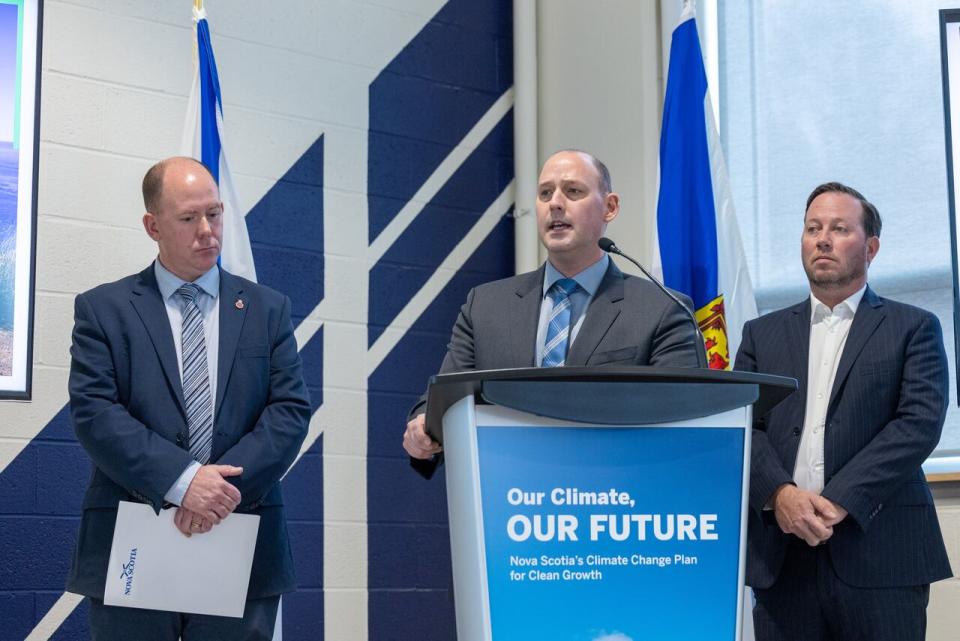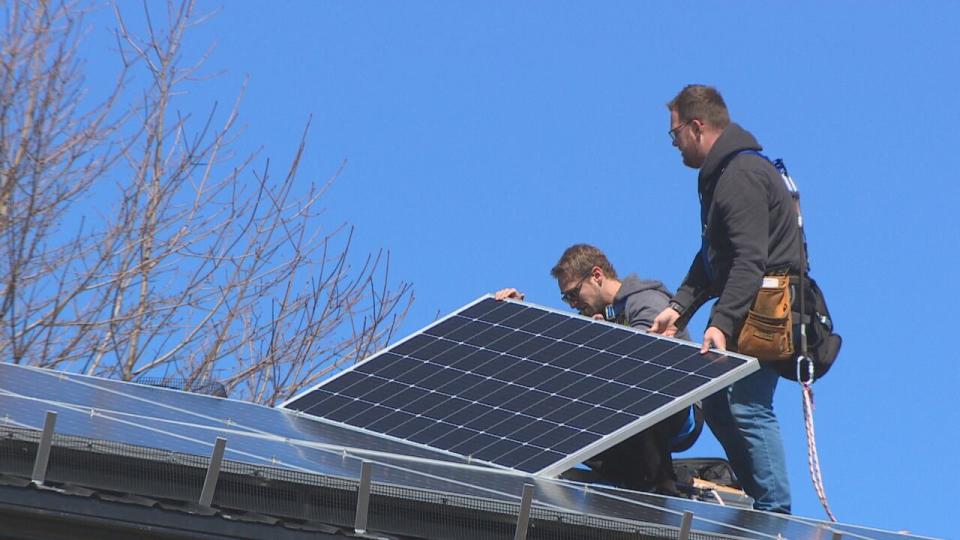A new report published by the Canadian Centre for Policy Alternatives says Nova Scotia’s plan to curb greenhouse gas emissions and mitigate climate change is falling short.
The report, released Monday, considers a 2022 plan from the PC government that details how it intends to reach its legislated climate goals.
It says the government’s goals are ambitious and “paint a rosy picture of Nova Scotia’s future,” but cannot realistically be met if the province stays on its current path.
“Our analysis shows that the changes envisioned by the plan are too shallow to achieve these goals and are at odds with the principles that are claimed to be its foundation,” the authors wrote.
The Department of Environment declined an interview request with Environment Minister Tim Halman.
A spokesperson instead sent a statement via email, rejecting the report entirely.
It said, in part, that the report “presents an unrealistic view of climate policy that we do not believe would benefit the people of Nova Scotia or be effective in responding to climate change.”

Jara de Hoog is the lead author of a report published by the Canadian Centre for Policy Alternatives that sharply criticizes Nova Scotia’s climate action plan. (CBC)
Jara de Hoog, the lead author, said the report started as her undergraduate thesis. She began studying the climate action plan shortly after it was introduced two years ago.
De Hoog said she chose to study the topic because she thinks about her future in the context of climate change “all the time.”
“It really frustrates me that these issues just aren’t being taken seriously and there’s all of these ways that governments are saying that they’re acting but they’re not really truly following up on that,” she said in an interview.
The report is co-authored by Alice Cohen, a professor in environmental and sustainability studies at Acadia University, and Andrew Biro, a professor of politics at Acadia University.
Strong focus on technological change
The authors analyzed the province’s 2022 climate action plan using two sets of criteria. They classified each of the 68 policy items in the plan according to whether they were more technological or cultural, or more individual or collective.
The analysis found that the plan had an “overwhelming” focus on technological changes rather than cultural ones.
De Hoog said technological changes aren’t inherently negative, but they shouldn’t be the main or only type of action to address climate change.
She used the example of electric vehicles: Switching from a gas-powered car to an electric one would reduce emissions, but driving less or not at all could reduce emissions even more. The latter, however, would require a larger shift in the cultural reliance on cars.
People would need to live closer to work and amenities, for instance, or have greater access to car-share services, reliable public transit or active transportation.


Nova Scotia Environment and Climate Change Minister Tim Halman (centre) at the release of his climate change plan in December 2022. (Mélanie Léger/CBC)
De Hoog said she generally favours cultural and collective actions over technological and individual ones.
“The reason I talk about collective and cultural actions is because those are kind of the dimensions that are often left out of climate policy. And yet those are the dimensions where I feel like we can make the most of a difference,” she said.
When it comes to individual versus collective action, the province’s plan is more balanced, the analysis found, and even leans slightly toward collective.
Reformed status quo
Overall, the report concluded that the province is settling for “a reformed status quo,” when the authors see a need for more radical action.
They said the province’s plan has some strengths, including a focus on affordability and support for community-based climate actions.
“Unfortunately, the potency of the collective and cultural actions … is diminished by the plan’s main weakness: its failure to pursue systemic economic, political, or cultural change.”
The statement from Halman’s office said the report “condemns economic growth and capitalism, and the government’s efforts to bring new business to Nova Scotia.”
It goes on to say that Nova Scotians want good jobs, public education, health care, housing and infrastructure, and that all are dependent on a “growth-focused economy.”
“What Nova Scotians do not want is the same kind of ideology that brought us the carbon tax,” the statement, attributed to the minister, said.
Recommendations
The report makes three recommendations. It says the province needs to make a stronger commitment to the principles that are described in the climate action report: sustainable development, a circular economy, equity and the Mi’kmaw principle of netukulimk, which means using the earth’s natural bounty to support individuals and the community.
It also calls for some initiatives, namely those that follow a more cultural and collective approach, to be scaled up.
These actions, the authors said, have not received enough funding.
Finally, the report calls for greater integration between government departments.
“A climate plan cannot be put in a separate ‘box’ while economic development, legislation, regulation and other government initiatives continue as if the climate crisis did not exist,” the authors wrote.


Nova Scotia is aiming to have 80 per cent renewable energy on the electricity grid by 2030. The provincial government is counting largely on wind- and solar-power generation to reach this goal. (Dave Laughlin/CBC)
As an example, they pointed to highway twinning projects, which have been a major undertaking for the Department of Public Works in recent years.
The authors said highway twinning would be unjustifiable if the principles of the plan were applied to all provincial actions.
They argued that twinnings simply incentivize more people to drive, eliminating initial time savings, and cannot be justified in the name of improved road safety, which could be achieved by lowering speed limits and/or offering safe mass transit.
The statement from Halman’s office took specific issue with the critique of highway twinnings.
“By the paper’s own admission, it is ‘radical,'” the statement said, referring also to an example in the report of a hypothetical publicly owned electric vehicle car-share service, and what Halman’s office describes as a condemnation of suburban homes.
The statement concludes by saying, “We can protect our environment, address climate change and have a strong economy. We can create a climate-resilient province and grow our population — I [Halman] disagree with the report that we have to choose one over the other.”
MORE TOP STORIES

